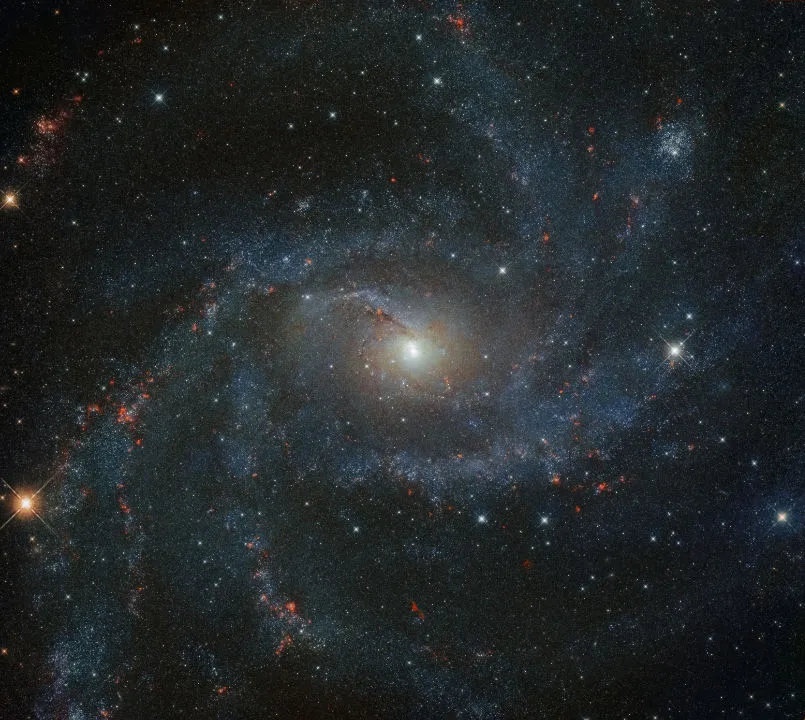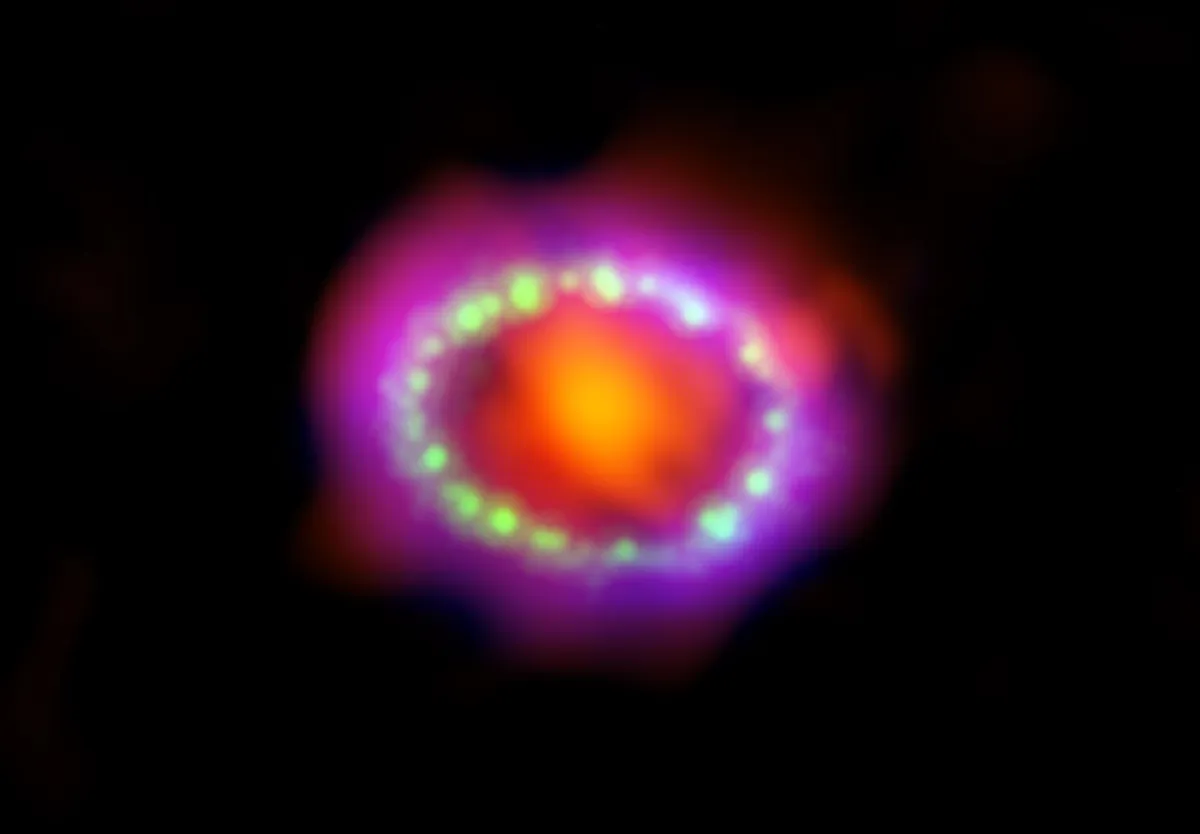A new discovery made by astronomers using the James Webb Space Telescope suggests that supernovae could have supplied the early Universe with the cosmic dust required for the formation of stars and planets.
The research looked at NGC 6946, which is known as the Fireworks Galaxy because of the number of supernovae observed occurring within the galaxy over the past century alone, amounting to nearly a dozen.

A supernova is the explosive end of a massive star's life, and occurs when it runs out of fuel and can no longer resist the force of its own gravity.
The star collapses in on itself and explodes.
Astronomers have been studying Supernova 2004et and Supernova 2017eaw with the Webb Telescope’s MIRI (Mid-Infrared Instrument), and found large amounts of dust within the ejecta of the supernovae.
In SN 2004et alone, they found over 5,000 Earth masses of dust.
This is a key finding because dust is one of the building blocks out of which stars and planets formed in the early Universe. It carries with it essential elements as it spreads across the cosmos.
Exactly where all the dust required to form the current Universe came from is a mystery that needs to be solved, and this new study suggests that supernovae could have been a major source.
Supernova 1987A

"Direct evidence of this phenomenon has been slim up to this point, with our capabilities only allowing us to study the dust population in one relatively nearby supernova to date – Supernova 1987A, 170,000 lightyears away from Earth," says lead author Melissa Shahbandeh of Johns Hopkins University and the Space Telescope Science Institute.
"When the gas cools enough to form dust, that dust is only detectable at mid-infrared wavelengths provided you have enough sensitivity."
The observation of dust in Supernova 1987A was announced by astronomers in 2014, following observations with the the Atacama Large Millimeter/submillimeter Array (ALMA).
But given that the Fireworks Galaxy is about 22 million lightyears away, it seems that an instrument as powerful as the James Webb Space Telescope was required to make this particular detection.
Surviving the supernova shock

How much dust can actually survive the violent, energetic power of a supernova?
The study suggests a sizeable amount can be leftover after the star's demise, and there could even be undetected, colder dust still obscured by the outermost layers.
"When you look at the calculation of how much dust we’re seeing in SN 2004et especially, it rivals the measurements in SN 1987A, and it’s only a fraction of the age,” says program lead Ori Fox of the Space Telescope Science Institute.
"It’s the highest dust mass detected in supernovae since SN 1987A."
"There’s a growing excitement to understand what this dust also implies about the core of the star that exploded.
"After looking at these particular findings, I think our fellow researchers are going to be thinking of innovative ways to work with these dusty supernovae in the future."
Read the full paper via the Royal Astronomical Society at academic.oup.com/mnras/article/523/4/6048/7213984.
